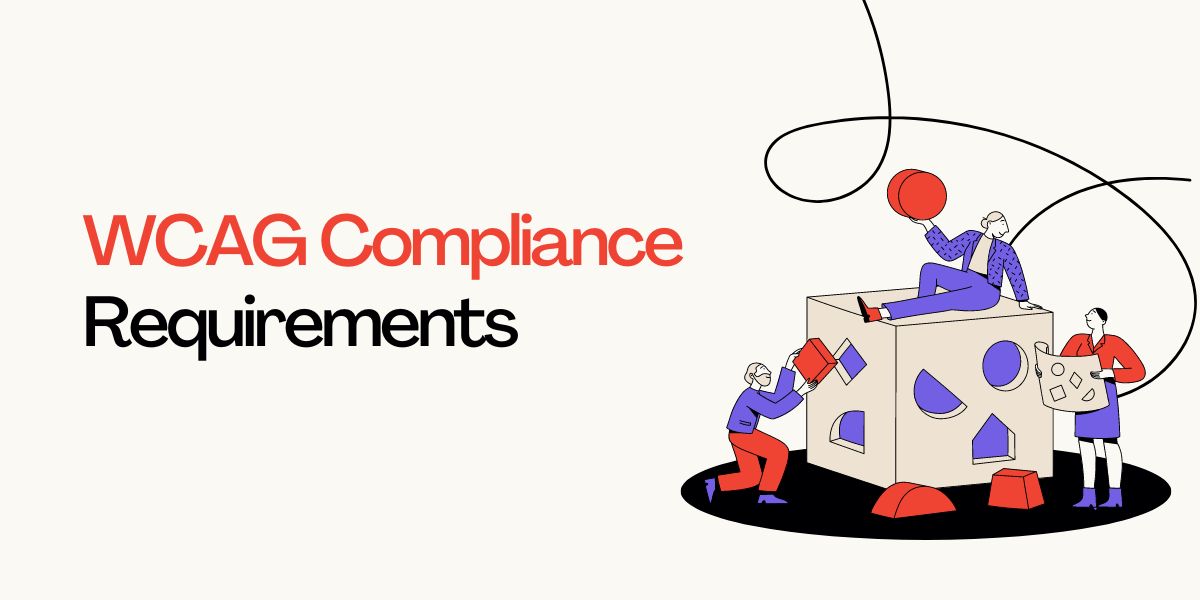Common WCAG Compliance Requirements and How to Address Them
 Robert Pattinson
Robert Pattinson
With the development of the digital world, the idea of making web-based internet applications accessible for every individual including the disabled is vital. Different guidelines based on the type of the digital content and the location administer the accessibility standards. However, there are some standard requirements which are globally accepted like the WCAG compliance requirements.
These work as a guide that can be used to improve web content accessibility. Standing as Web Content Accessibility Guidelines, WCAG are prominent accessibility guidelines. However businesses may get confused in managing WCAG compliances. Here is a detailed article explaining the relevant advantages concerning WCAG compliance requirements and typical ways to meet them.
Fundamentals of WCAG Compliance
The four WCAG compliance propositions are Robust, Perceivable, Operable, and Understandable (POUR). These guidelines consist of a set of guidelines that web designers and developers must follow in order to ensure accessibility.
Some common WCAG compliance requirements include:
- Text Alternatives
Make text transcription so that non-text can be translated into text indicating the large print or braille as well as speech.
- Keyboard Navigation
Make sure that options are reachable with a keyboard only, because some people cannot use a mouse.
- Readable Text
Ensure the text content is easily understood by the target audience and avoid complicated and technical terms.
- Error Identification
WCAG compliance requirements further mention and explain errors in the form input fields to assist users in the identification and correction of such mistakes.
- Responsive Design
Content should optimise its layout and functionality for different devices, such as screen readers and magnifiers.
Guidelines to Address The Challenges In The WCAG Compliance Requirements
Addressing these WCAG compliance requirements involves a mix of design, development, and testing strategies:
- Text Alternatives
Employ appropriate text descriptions for images, videos and other forms of media. The alt text must describe the function or the reason for inserting the content, not its appearance.
- Keyboard Navigation
Navigate your website with a keyboard alone to check each form, button, and link to confirm they are accessible.
- Readable Text
Stay away from the use of technical terminologies when explaining a concept. Further, organize content by headings, lists, and well-phrased sentences to enhance readability.
- Error Identification
Real-time form validation and error messages. Name all input fields and give directions on how to edit them in case they are wrong. Employ ARIA attributes and roles to improve the error message delivery.
- Responsive Design
Make the structure of your webpage responsive and able to adapt to various screen resolutions. In CSS, use media queries to alter the content and guarantee interaction space for each element on different devices.
Advantages of Utilizing WCAG Compliance Guidelines
Addressing WCAG compliance guidelines has numerous benefits:
- Inclusion:
It guarantees that everyone, including the disabled, can navigate, operate, and engage with the content on your site. Further, it encompasses the availability of the content for the general audience and people from impairments.
- Legal Compliance
Ensures that the WCAG compliance requirements are in line with the law and minimises legal risks about accessibility. The majority of the nations have laws in place that restrict internet connectivity.
- Enhanced User Experience
Enhances user interaction for all the users not only the disabled ones hence the interaction is more pleasant. It covers the access to the digital content for the general audience even when they’re in difficult environments.
- SEO Advantages
WCAG compliance guidelines also ensure that accessible websites are generally more SEO-friendly. This is because they follow proper HTML semantics, can include keywords in the alternative descriptions and texts, and create a well-structured layout.
Ending Note
This makes it compulsory for web page designers and developers to factor the WCAG compliance guidelines into their work design to attain accessibility. The most familiar are concerns such as offering text descriptions, keyboard compatibility, and readable text.
Besides satisfying the legal requirement, these practices enhance users’ experiences and increase the viewer base. Following these standards is not a mere compliance issue, it is for creating the Web for all the people.
Subscribe to my newsletter
Read articles from Robert Pattinson directly inside your inbox. Subscribe to the newsletter, and don't miss out.
Written by
